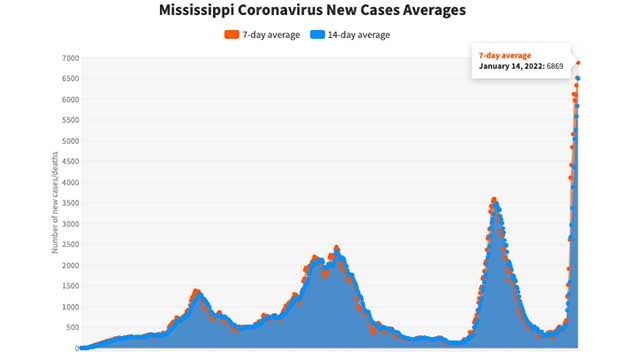In 2018, get rid of the clutter weighing down your home and your heart
Published 8:58 am Wednesday, January 3, 2018
If you’ve read Marie Kondo’s bestseller, “The Life-Changing Magic of Tidying Up,” you probably already know where I’m going with this. It’s a fantastic read (not to mention a quick one, which always increases the likelihood of inclusion on my calendar), and isn’t littered with gimmicks or cheesy catchphrases pumping up an infomercialized lifestyle you’d be embarrassed to tell your friends about.
Kondo’s book lays out a complete plan for decluttering a person’s space, all rooted in a simple, significant purpose: Once your house is in order, your life will follow. Makes sense, right?
What makes Kondo’s method different from other cleaning manuals or self-help guides is this isn’t a mindless process of tossing out whatever you don’t use or haven’t worn in six months. The method demands confronting and holding everything you own, from kitchen utensils to couch pillows to that pre-baby bikini still keeping a prime spot in your dresser—everything. As you pick up each item, you ask yourself: “Does this spark joy?” In other words, how do you feel when you hold it? Part of tidying up means surrounding yourself with things that bring you happiness and ridding yourself of negative or emotionless excess.
This is where my friends and family give me skeptical looks when I explain the process. “How I FEEL when I hold a can opener? Come on.”
What Kondo is asking her clients and readers to do is figure out why they’re choosing to keep things around them, particularly if they don’t spark happiness or serve a real purpose other than being part of a household inventory. My wardrobe needed that confrontation as I sifted through three closets (don’t judge me), despite the fact I only wear roughly 10 percent of their contents. I learned most of my clothing didn’t so much spark joy as it did the question of, “Where did I even get this?” What I found was my crammed clothing collection wasn’t a wardrobe, but things I bought because they were on sale or dresses I kept because I wore them on significant days (despite never wearing them again) or hand-me-downs from my sister and mom I probably should have refused but “hated to throw away.”
Getting caught up in the culture of “stuff” is probably easier for millennials who grew up constantly enticed by the “next big thing” in American culture. Many of us amassed collections of toys, music, movies, electronics, sneakers and even hyped-up school supplies we knew would make us famous for a day as we shared our loot of gel pens in homeroom or showed off our new Trapper Keeper at recess. Now as adults, we wonder why we never seem to have enough space to contain our lives and possessions, rarely stopping to ask ourselves to assess what we’ve already chosen to put in those spaces and why.
Many organizational experts share the same fundamentals of decluttering, but the one that should be highlighted and underlined in red is this: You only have so much space. How you choose to fill that space is your decision, but don’t take your frustration out on the space itself when you’re the one trying to overfill it.
Here’s where the “life-changing magic” of Kondo’s method comes in, at least for me: The same spark-joy decluttering concept works wonders for other aspects of life, particularly when it comes to how we spend our lives and with whom. After all, we’ve only got so much energy and time; are we spending both wisely?
I spent a week making mental note of my interactions everywhere I went and the responsibilities and commitments I took on in the process. I paid attention to what made me anxious or nervous, along with what was genuinely fulfilling, and ultimately what kept me awake at night as I contemplated the next day’s busy schedule. The goal here was not to isolate and remove discomfort or challenging situations. It was to confront them, as well as positive experiences, to determine whether they play an essential role in my life or if they’re there as a crutch, for better or worse. What I discovered is I spent an unhealthy amount of time trying to please everyone in one way or another just to keep the plates spinning. I was saying yes when I should have been saying no. I was allowing myself to worry about meaningless problems and petty opinions of those who contribute nothing to my life or the greater good. At no point have I ever stopped to assess the space I’m working with—in this case, my time, energy and emotional capacity. I just kept cramming and cramming without discernment or consideration for the things that deserve more of me than I can give.
The result of this way of life is carrying a crushing load of guilt, anxiety and stress because we’re not equipped to juggle an ever-expanding existence, especially when spending our time on something only because we feel like we have to. It turns out your mind can suffer from the same adverse effects of clutter as your home when it keeps us from living the lives we want.
It might be easier to purge our closets than our minds and emotions. But try it anyway, even in some small way that lightens your load, and notice how much better it feels to control the mess rather than letting it control you.
(And if you’re really into this idea, I highly recommend another fantastic read: Sarah Knight’s hilarious self-help parody of Kondo’s method titled, “The Life-Changing Magic of Not Giving a F*ck: How to Stop Spending Time You Don’t Have with People You Don’t Like Doing Things You Don’t Want to Do”)
(Originally published by The Oxford Eagle)





